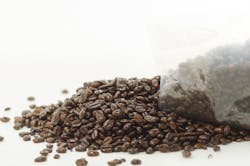Flavor is arguably one of the most important aspects of the coffee-drinking experience. Many variables go into determining the flavor of coffee, such as the type of bean, origin, extraction, brew ratio and brewing equipment to name a few. A coffee’s flavor can change from one cup to another, even if they are from the same roast. In today’s coffee culture where consumers want customization, specialty items and greater variety, a thorough understanding of flavor trends is necessary for operators offering an OCS component.
All about the origins
One of the biggest determining factors to the flavor profile of coffee is where it was sourced. More than 50 countries around the world grow coffee, according to the National Coffee Association (NCA), and each country and region produces different coffee varieties.
In fact, research suggests that different altitudes, temperature and latitude contribute to different cup profiles. According to Shawn Steiman, PhD and author of The Little Coffee Know-It-All: A Miscellany for growing, roasting, and brewing, uncompromising and unapologetic, coffee grown in higher altitudes tends to be more complex and acidy. Higher elevations produce hard, dense beans considered to be higher quality. According to Drift Away Coffee, general flavors are associated with different elevations. Coffee grown above 5,000 feet can be considered spicy, floral or fruity; around 4,000 feet, coffee may have citrus, vanilla, chocolate or nutty notes; 3,000 feet may be smooth while below 2,500 feet may be mild, soft and bland.
There are exceptions to the rule, though. In Hawaii, coffee farmers grow their crop at elevations of 2,000 to 3,000 feet, while in places like Central America coffee grows between 4,000 to 6,000 feet. Coffees from both regions are popular and in demand.
Complex flavors
When it comes to describing coffee flavor, there are many ways to do so. One of the most iconic resources in the coffee industry, in fact, was recently updated to showcase coffee flavor notes. This year the Specialty Coffee Association of America revised the Coffee Taster’s Flavor Wheel for the first time in more than 20 years.
The words that make up the wheel come from the World Coffee Research Sensory Lexicon, a universal language of coffee’s sensory qualities and a tool for measuring them, according to the SCAA.
To design a new flavor wheel the SCAA partnered with the Food Science and Technology Department at the University of California, Davis to understand how coffee tasters associated flavor notes with one another. The research conducted helped group flavor notes into different categories, as well as visualized where the flavor notes fell in proximity to one another. The SCAA then grouped the flavor notes into a hierarchy and arranged them in tiers around a wheel, allowing for a simplified choice of words to describe coffee flavor.
Consumer preferences are key
When it comes to offering coffee in the workplace, operators should be aware of the current trends surrounding coffee consumption – including the flavor trends that consumers prefer – and offer options that fit those demands.
Consumers are more aware of specialty and gourmet coffee; in fact, according to Mintel the majority of coffee consumed in the U.S. is now specialty coffee, with leading flavors including caramel, chocolate, and cinnamon. An increased consumer coffee palate was also listed as one reason the OCS industry reached a record-breaking $4.75 billion last year.
According to NCA data, espresso machines and single-cup brewers continue to drive the highest satisfaction of workplace coffee, perhaps because of the customization and availability of a more specialty cup of coffee. In the same study the NCA found that espresso-based beverages are consumed by significantly more proportions of consumers aged 18-39. The strong majority of coffee consumers participating in the study also preferred dark or medium roast coffees, at 36 percent and 60 percent respectively.
Offering coffees that fit a refined consumer palate will be key to winning satisfaction in a competitive OCS industry.
About the Author

Adrienne Klein
Contributing Editor
Adrienne Zimmer Klein is a freelance writer with a background in the vending, micro market and office coffee service industry. She worked as an associate editor and managing editor at Automatic Merchandiser and VendingMarketWatch.com from 2013 until 2017. She is a regular contributing writer at Automatic Merchandiser.
